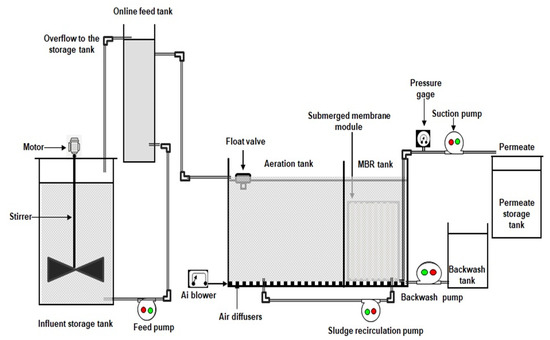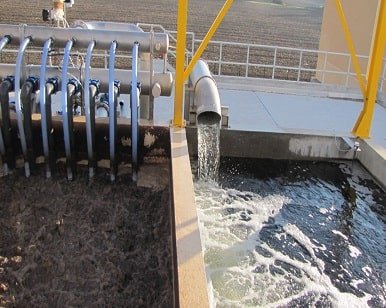Future Trends in Membrane Bioreactor Technology and Its Global Impact
Future Trends in Membrane Bioreactor Technology and Its Global Impact
Blog Article
Membrane Layer Bioreactors Discussed: Efficient Solutions for Tidy Water
Membrane bioreactors (MBRs) have arised as an advanced option for dealing with the pressing obstacles of wastewater treatment - Membrane Bioreactor. By integrating biological procedures with innovative membrane layer filtration, MBRs not just enhance the high quality of cured water but likewise minimize the spatial demands of therapy facilities.

What Are Membrane Bioreactors?
Membrane bioreactors (MBRs) are sophisticated wastewater therapy systems that incorporate organic destruction processes with membrane layer filtration innovation. This assimilation permits the reliable removal of pollutants from water, making MBRs a recommended choice in different applications, consisting of local wastewater therapy and commercial effluent monitoring.

One of the important benefits of MBRs is their capability to generate top quality effluent, usually suitable for reuse in irrigation or industrial processes. In addition, MBRs call for a smaller footprint compared to conventional therapy systems, making them ideal for metropolitan settings where area may be limited.
Additionally, MBRs can successfully manage varying influent tons and are much less at risk to the results of harmful shocks. These attributes add to their growing appeal as a lasting remedy for resolving the enhancing demand for tidy water while lessening ecological influences.
How Membrane Bioreactors Work
While the procedure of membrane layer bioreactors (MBRs) may appear complex, it essentially rotates around the synergy between biological processes and membrane layer purification. MBRs integrate a biological therapy process, usually activated sludge, with a membrane separation unit to deal with wastewater successfully.
In an MBR system, wastewater is very first introduced into a bioreactor where microbes weaken organic matter and various other pollutants. The biological activity lowers the focus of pollutants while advertising the growth of biomass. Following this organic therapy, the mixed alcohol goes through membrane layer purification, which can be microfiltration or ultrafiltration, relying on the preferred effluent high quality.
The membrane layers function as a physical obstacle, permitting water and little solutes to pass while preserving suspended solids and bigger particles. This makes it possible for the system to keep a high concentration of biomass within the reactor, boosting the treatment efficiency.
Moreover, the continual separation of cured water from the biomass promotes a small layout and minimizes the impact of the therapy facility. Generally, the mix of biological destruction and membrane filtering in MBRs causes trustworthy and effective wastewater therapy, making certain high-quality effluent appropriate for different applications.
Advantages of MBR Technology
One of the crucial advantages of membrane layer bioreactor (MBR) modern technology is its capacity to produce top notch effluent with a considerably decreased impact compared to traditional wastewater therapy methods. MBR systems effectively integrate biological therapy and membrane purification, resulting in exceptional elimination of pollutants, consisting of put on hold solids, virus, and raw material. This ability results in effluent that commonly meets or exceeds stringent regulatory criteria for reuse and discharge.
Additionally, MBR innovation permits greater biomass concentrations, which improves the therapy efficiency and minimizes the useful source called for reactor quantity. This portable design is especially advantageous in urban areas where room is restricted. The functional flexibility of MBR systems also means they can adjust to differing influent qualities and circulation rates, making them suitable for a vast range of applications.
In addition, the lowered sludge manufacturing connected with MBR procedures adds to reduce operational and upkeep expenses. The membranes act as a physical obstacle, reducing the danger of clogging and enabling longer operational durations between cleaning. Overall, the advantages of MBR technology make it an appealing option for sustainable wastewater therapy, dealing with both environmental problems and the demand for reliable source monitoring.
Applications of Membrane Bioreactors
With their adaptability and effectiveness, membrane layer bioreactors (MBRs) discover applications throughout numerous sectors, including company website metropolitan wastewater treatment, commercial processes, and even water improvement. In community settings, MBRs offer a small solution for treating wastewater, effectively getting rid of pollutants while at the same time generating top notch effluent that meets rigid regulative requirements. This makes them especially suitable for areas with restricted room.
In industrial applications, MBR innovation is utilized for treating process water, especially in sectors such as food and beverage, pharmaceuticals, and petrochemicals. These sectors gain from MBRs' ability to manage high natural loads and their performance in recouping important sources from wastewater, such as nutrients and water.
Furthermore, MBRs play a vital role in water improvement initiatives, enabling the reuse of treated wastewater for watering, industrial processes, or perhaps as potable water after additional therapy (Membrane Bioreactor). Their effectiveness in removing contaminants and pathogens makes them a reliable selection for ensuring water top quality in various reuse applications
Future of Water Therapy Solutions
The future of water therapy options is poised for transformative improvements driven by technical technology and increasing environmental understanding. As worldwide water deficiency comes to be a pressing problem, new techniques, consisting of membrane layer bioreactor (MBR) systems, are established to play an essential duty in enhancing the performance and sustainability of water treatment processes.
Emerging innovations such as artificial knowledge and artificial intelligence are expected to maximize therapy click now operations, permitting real-time tracking and anticipating maintenance. This will certainly enhance the overall reliability and effectiveness of water treatment facilities. Innovations in membrane products, such as graphene and nanofiltration, assure to enhance permeation rates and reduce fouling, leading to lower energy usage and operational expenses.
Additionally, the combination of renewable resource resources right into water treatment plants will certainly contribute to greener methods. The circular economic climate design will additionally acquire grip, urging the recovery of beneficial resources from wastewater, such as nutrients and power.
Final Thought

Membrane layer bioreactors (MBRs) have arised as a sophisticated service for addressing the pressing difficulties of wastewater therapy. By integrating biological procedures with sophisticated membrane purification, MBRs not just improve the quality of cured water however likewise lower the spatial requirements of therapy centers.One of the key benefits of membrane layer bioreactor (MBR) innovation is its capacity to generate premium effluent with a substantially lowered impact contrasted to conventional wastewater treatment methods.With their convenience and efficiency, membrane bioreactors (MBRs) find applications throughout various industries, consisting of municipal wastewater treatment, industrial processes, and also water reclamation.In final thought, membrane layer bioreactors stand for a substantial advancement in wastewater therapy innovation, incorporating organic processes with efficient membrane layer purification to create high-quality effluent.
Report this page